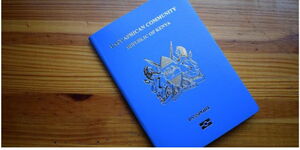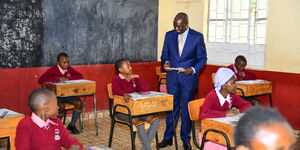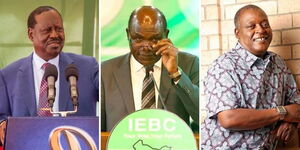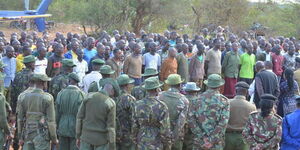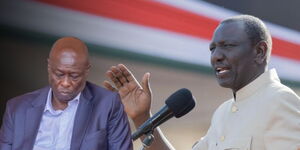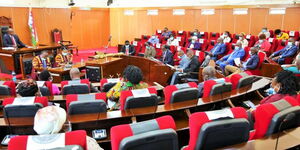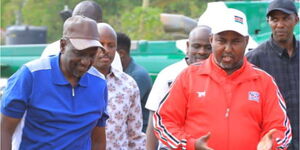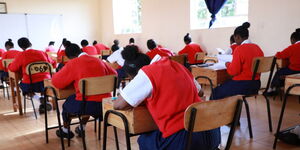Nandi Senator Samson Cherargei, on Wednesday, March 12, seemingly faulted the 2018 handshake between former President Uhuru Kenyatta and former Raila Odinga in the wake of President William Ruto’s pact with Raila, which he termed genuine.
Through a statement, the staunch ally of Ruto purportedly castigated the pact Raila had with Uhuru, highlighting the fact that the former’s current partnership with Ruto is foolproof, as seen in the incorporation of leaders allied to Raila into government.
Aside from the entry of Raila’s allies into Cabinet positions, the arrangement has led to sweeping changes in both the National Assembly and Senate, with leaders from Raila’s Azimio taking over powerful parliamentary committees.
“Unlike the Uhuru-Raila handshake of 2018, the Ruto-Raila handshake of 2025 is a genuine partnership, as you can see in the election of chairpersons in the Senate & National Assembly and the looming cabinet reshuffle/PSs & senior government officials appointments,” Cherargei stated.
His comments come in the wake of the signing of a Memorandum of Understanding between Ruto and Raila that would see Ruto’s United Democratic Alliance (UDA) and Raila’s Orange Democratic Movement (ODM) work together.
The agreement was announced on Friday afternoon at an event held at the Kenyatta International Convention Centre (KICC) in Nairobi and attended by several high-profile leaders, including politicians from Kenya Kwanza-affiliated parties and the ODM party.
Among the key agreements reached between the two leaders are the full implementation of the National Dialogue Committee (NADCO) report, addressing youth unemployment, and the implementation of the two-third gender rule.
A notable provision in the NADCO report was the creation of the Office of the Prime Minister and the Office of the Leader of the Official Opposition. The prime minister is to be nominated by the president and approved by the National Assembly. While it is not official, many observers predict that Raila will enter government as the prime minister.
The agreement between Ruto and Raila mirrors Raila’s past political cooperation deal with Uhuru as it is a “working political framework.” This generally refers to informal or formal arrangements between political parties or leaders to collaborate on specific issues or support each other in legislative processes without forming a formal coalition or merging into a single party.
However, in his deal with Uhuru, Raila did not get any of his allies into government. Instead, he got increased political influence within the government that ironically led to Ruto having a diminished role during Uhuru’s second term.
Perhaps the biggest benefit that Raila got in his deal with Uhuru was the Building Bridges Initiative (BBI), a task force meant to address governance issues, ethnic divisions, and electoral injustices.
The BBI sought constitutional changes, including expanding the executive with positions like prime minister and two deputy prime ministers. However, it was later declared unconstitutional by the courts.
Meanwhile, Cherargei drummed up support for the new agreement, noting that the country was now more united, cohesive, and prosperous under the leadership of Ruto and Raila.



